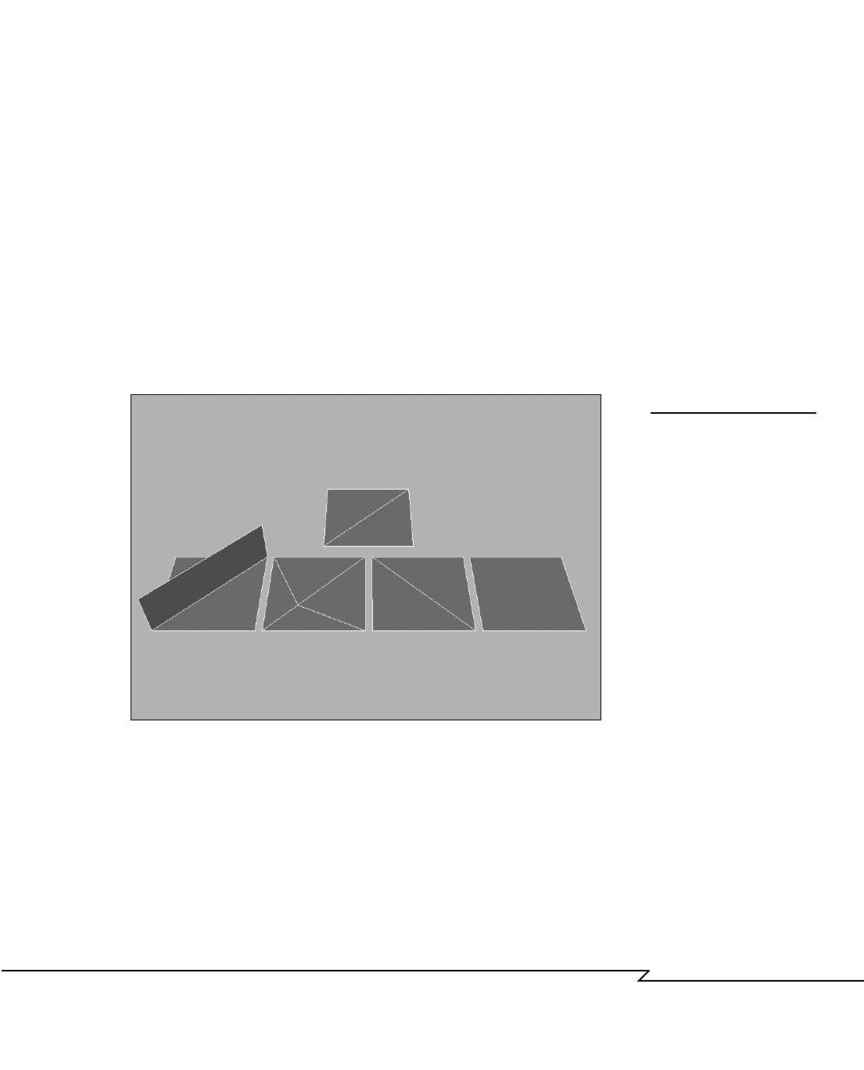Cre@teOnline - The Web Designer's Bible CH04 Page 17

Edge divide is a polygon-level form of tessellation that splits an edge
by creating a new vertex at the point the user clicks, creating addi-
tional polygons in the process (see Figure 4.14c).
Edge turn rotates the selected edge between available vertices. This is
usually done to influence the normals of the polygon so that the
result seems to be smoother (see Figure 4.14d).
Edge visible/invisible toggles the visibility of the edge. Whether an edge
is visible has an influence on the normals (and therefore the appear-
ance of smoothness) of the rendered result. Visibility also helps to
define which faces in a given area belong to a single polygon--now
that the edge is invisible, the pair of triangular polygons has become
a quad (see Figure 4.14e).
C
H A P T E R
4 : M
O D E L I N G
: B
E Y O N D
T H E
B
A S I C S
163
F
IGURE
4.14
Edge operations: (a) The
unaltered polygon, made up
of two triangles. All opera-
tions are performed on the
edge running diagonally
from lower left to upper
right. (b) Edge extrude cre-
ates a new set of faces that
join the original and extrud-
ed edges. (c) Edge divide
adds a vertex and splits the
original two faces into four.
(d) Edge turn rotates the
edge. (e) Edge invisible
hides the edge and turns the
tris into a quad.
(a)
(b)
(c)
(d)
(e)
Many of the edge operations are rarely used during normal modeling; they
are much more commonly used in low-poly modeling, where every aspect of
a given poly can have a noticeable impact on the model. You'll learn more
about this style of modeling in depth in the brilliantly titled Chapter 5,
"Low-Poly Modeling."
04 2433_CH04 8/23/02 8:34 AM Page 163
